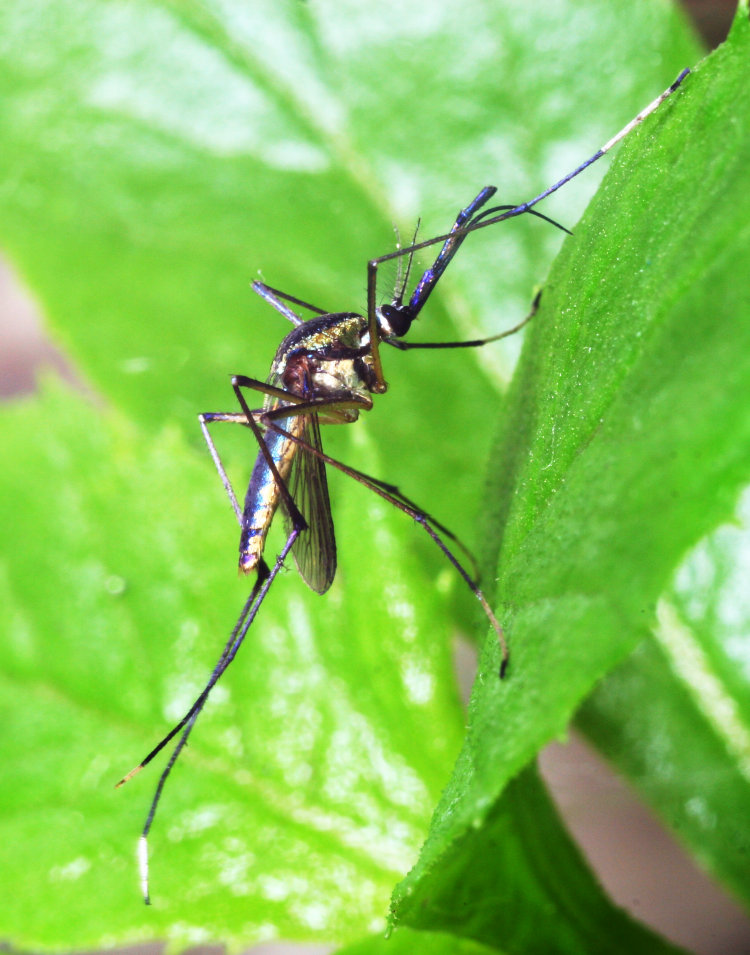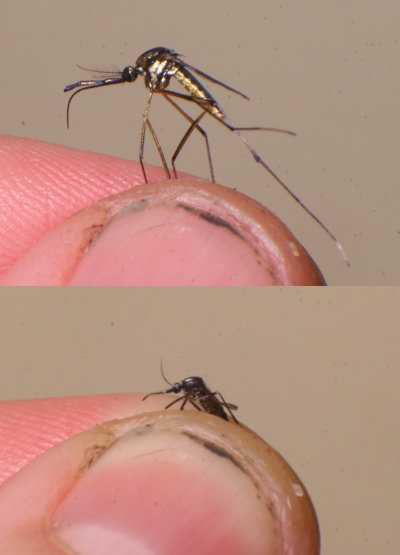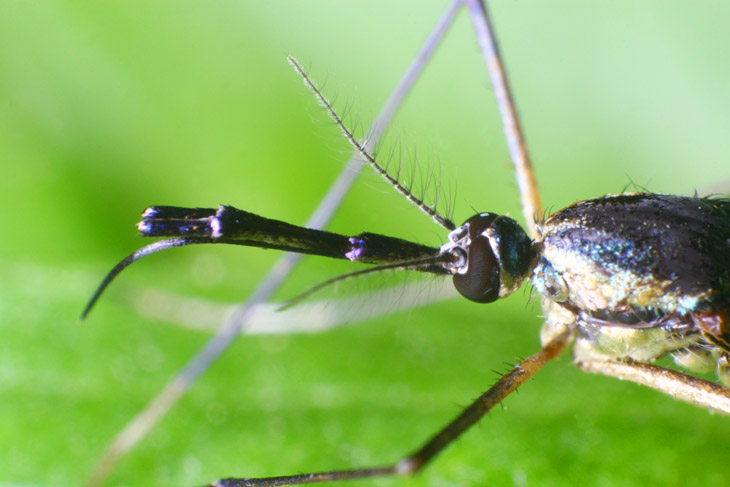
 This week we have a curious specimen that was rather obvious when spotted that one time, nine years ago, because of both its size and its coloration. This is an elephant mosquito (Toxorhynchites rutilus,) and it was surprisingly easy to catch when it was perched atop the car, less so to photograph even with the help of a terrarium – the top image was tweaked to remove the contrast-reducing haze caused by the terrarium glass. It really is an iridescent blue and gold, and as you can see from the size comparison at right, much larger than a ‘normal’ mosquito (whatever species that is – there might be several.)
This week we have a curious specimen that was rather obvious when spotted that one time, nine years ago, because of both its size and its coloration. This is an elephant mosquito (Toxorhynchites rutilus,) and it was surprisingly easy to catch when it was perched atop the car, less so to photograph even with the help of a terrarium – the top image was tweaked to remove the contrast-reducing haze caused by the terrarium glass. It really is an iridescent blue and gold, and as you can see from the size comparison at right, much larger than a ‘normal’ mosquito (whatever species that is – there might be several.)
Since The Girlfriend and The Sprog both react badly to mosquitos, I did not keep this one around, much less release it, once I was done with the photos, but preserved it in alcohol. This was before I attempted to identify it, when I found that I should have released it, since not only do they not bite humans, their larva prey on the larva of the mosquitos that do. They are, in fact, used as a control measure in areas where the parasitic mosquitos breed. However, I can see how this might meet with mixed success, because anyone seeing a mosquito this size is quite unlikely to allow it to fly off unmolested.

The iridescence really does extend down the legs a bit and even out onto the proboscis – if you’re gonna be flamboyant, don’t half-ass it. What actual purpose this serves, I cannot even speculate on – no, that’s not true, very little stops me from speculating, but let’s just say, take it as seriously as Faux News deserves to be. Since this species feeds on flower nectar as adults, the coloration may help them camouflage among the blossoms when they’re holding still during feeding and thus most vulnerable. Or they may simply be Notre Dame supporters (and given how dismissive of all sports that I am, I had to look that up.)
So as I type this, I find that Wikipedia says there are many species of Toxorhynchites and they’re extremely hard to tell apart, making my specific identification somewhat suspect, but going back to BugGuide.net, there’s only one species in North America, so we’re staying with Toxorhynchites rutilus. The amount of research I do for these posts…



















































